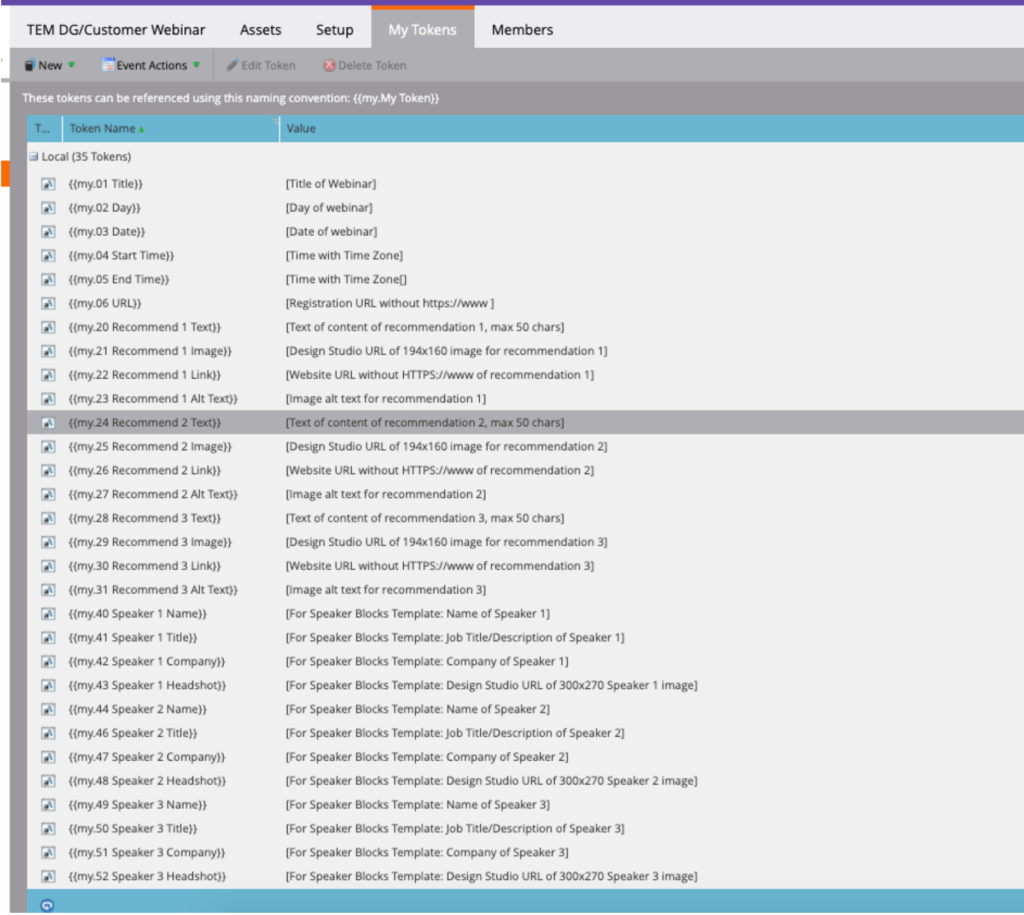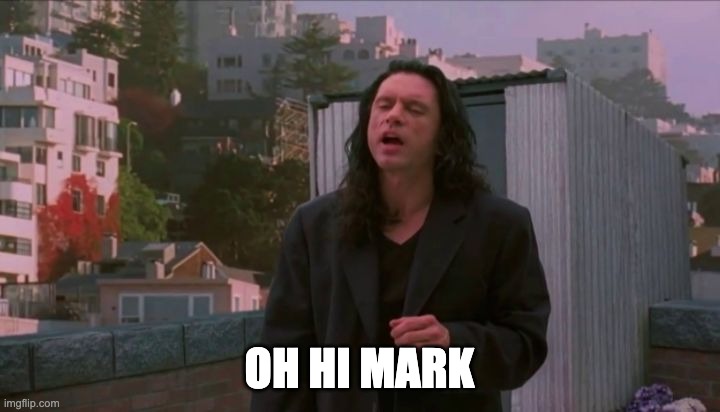No matter how you may feel about Adobe Marketo as a marketing automation platform, everyone agrees that the token feature is the bee’s knees. It is an incredibly simple feature that provides infinite value to both the marketers using the tool and the contacts that receive emails that use them.
All MAPs have a token-like feature that allows you to insert a variable into an email to customize it. But no other platform was able to bottle quite the same magic as Marketo tokens.
Wait, what are Marketo tokens?
According to Adobe Marketo, “A token is a variable that can be used in Marketo smart campaign flow steps, emails, landing pages, snippets, and web campaigns.”
Tokens are available to pull in field values for people (e.g., First Name), companies, campaigns, system, trigger, program, and last, but most importantly, custom tokens called “my tokens.”
The person, company, and campaign tokens are similar to what you would see in other MAPs. You put these tokens into an email hello line to read “Hi Mark” instead of “Hi Customer.” These types of tokens are great, and there are many excellent use cases for them, but they are nothing to write home about.
What makes Marketo tokens so much better?
The token tree
Marketo’s unique folder tree structure is the true source of power and why Marketo tokens are so awesome. Marketo uses hierarchical folders to store and organize programs and assets like emails. You can create tokens in each of these different hierarchical levels depending on your use case.
For example, you could create a folder for all your programs for the current year, a subfolder for webinars, another folder for the audience, and finally a folder for each individual webinar and the associated programs and assets for each program that webinar. The final folder structure would look something like this:
Year > Webinars > Audience > Specific webinar
The beauty of this folder hierarchy is that when you create a token in a parent folder, it becomes an inherited token in all subfolders and assets below. So if I create a token for the copyright year in the top-level folder, I can change the value for that token just once, and all of the assets in the subfolders below will be updated as long as they use a token with the same name.
Marketo calls these “inherited tokens”: when a token is created locally at the folder level at a higher folder. When used strategically, they can save so much time and hassle. If you really want to get after it, you might try to create an email script token in your top-level folder that will automatically change the copyright date for you.
Thanks to inherited tokens, the copyright date will be updated in all the child folders and assets. Read how here. No more setting a reminder for yourself on January 1 every year to update your email footer templates!
Another great feature is that you can overwrite inherited tokens locally. Overwriting inherited tokens gives users the flexibility to change assets on the fly and prevents tokens from being a burden as you scale.
In the webinar example, you could create a template for all the webinar programs and emails and use a token for the webinar recording link. You could include this link at the webinar folder level so that there is a default value ready to go for that token to send users to the webinar page on your website in case you forget to update it. Then on the program level, you can overwrite that value with the specific webinar recording link once you have it available. As long as the tokens have the same name, you can overwrite it locally with a new value.
Best practice is to limit your local overwrites so that you don’t lose track of them. One common approach is to create top-level tokens that are rarely, if ever overwritten, then make program-specific changes at the program folder level.
Tokenized Templates
The biggest game-changer of them all is to leverage tokens in your templates. When implemented correctly, tokens allow you to clone a program or folder of programs for a campaign and edit the specifics in just one or two places. You no longer need to open every email to copy and paste the same content twenty different times! This is the biggest time saver and allows marketing teams to increase their campaign velocity and productivity.
As discussed earlier, inherited tokens allow you to edit a token in a parent folder so that the edit propagates to all subfolders and assets. When used in templates, it means that you can create truly rinse-and-repeat campaigns that you can set up in minutes.
In other MAPS, by comparison, you would need to clone each email from a campaign template and update each one manually with the new specifics (i.e., webinar start time) and then put them all together before activating. It’s not hard work, but it’s time-intensive and boring.
Instead, with Marketo tokens, you can clone a campaign template or folder of programs and edit the tokens for all the assets in one place. As a result, it reduces the amount of copy and paste required to clone and launch a campaign and reduces the likelihood of human error by missing something as you edit.
Pro-tip: To take your customized template tokens to the next level, number them. By default, custom tokens are listed in the program folder alphabetically. But this means that your Start Time and End Time tokens are nowhere near each other. Not only that, E comes before S, so you could easily transpose the values if you are copying directly from your campaign brief. By numbering them, you can group tokens in a way that makes logical sense as you are setting up the campaign.
In an example on the Marketo Nation forum, Amy Goldfine shares a screenshot of her template with this numbered token system in action that is AMAZING:

Source: https://nation.marketo.com/t5/product-discussions/tokens-use-cases-and-best-practices/td-p/301654?lightbox-message-images-301863=27953i5216295FEF01D85A
There are few things in the martech space that I get more excited about than Marketo tokens. For anyone who has spent hours copying and pasting the same thing dozens of times each month to create a new campaign using other MAPs, you know the pain, too.
Marketo has done an excellent job with this feature to create something that real marketers can use to be productive. And by thinking strategically about leveraging them, marketing teams can get immense value out of this feature.












